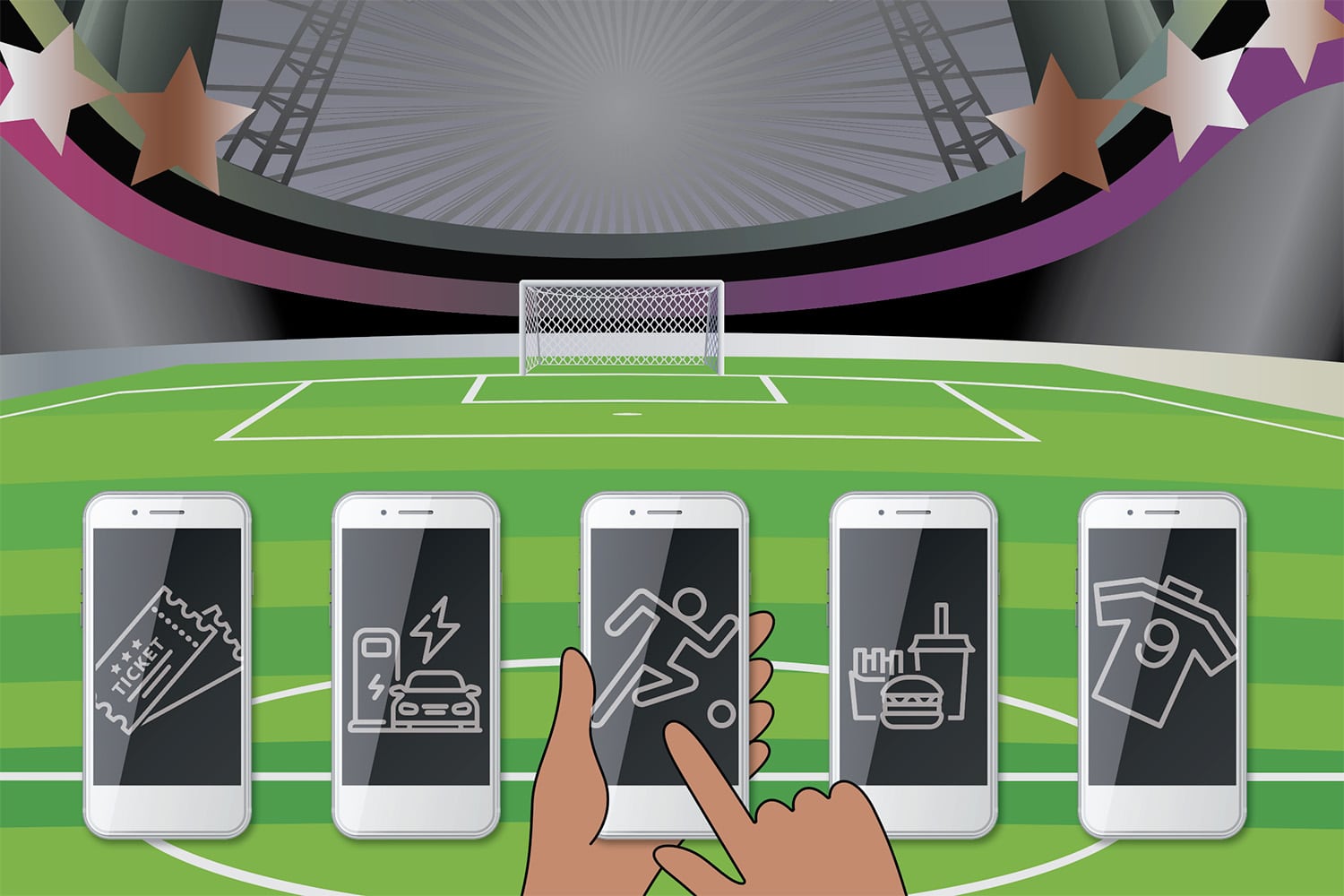
The Connected Stadium
Venue Management’s Most Exciting Technology Had Its Roots in Parking
Share:
Share:
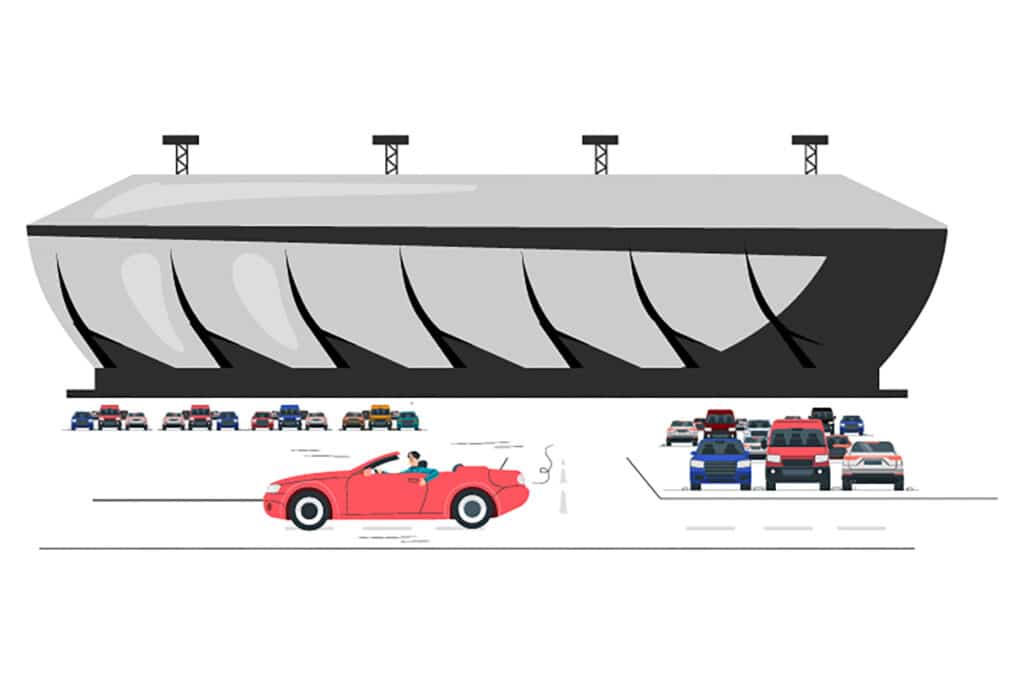
Over the last few years, we’ve seen a massive amount of growth—both quantitatively and qualitatively—in the event parking space. Between 2020 and 2022, we saw the number of event parkers grow by over 456%. Much of this growth can be attributed to the COVID-19 pandemic; both from the desire to get out of the house more often as well as the digital habits consumers formed during the pandemic. When consumers were staying at home and ordering in, those habits became deeply ingrained and integrated themselves into the event parking experience in its resurgence.
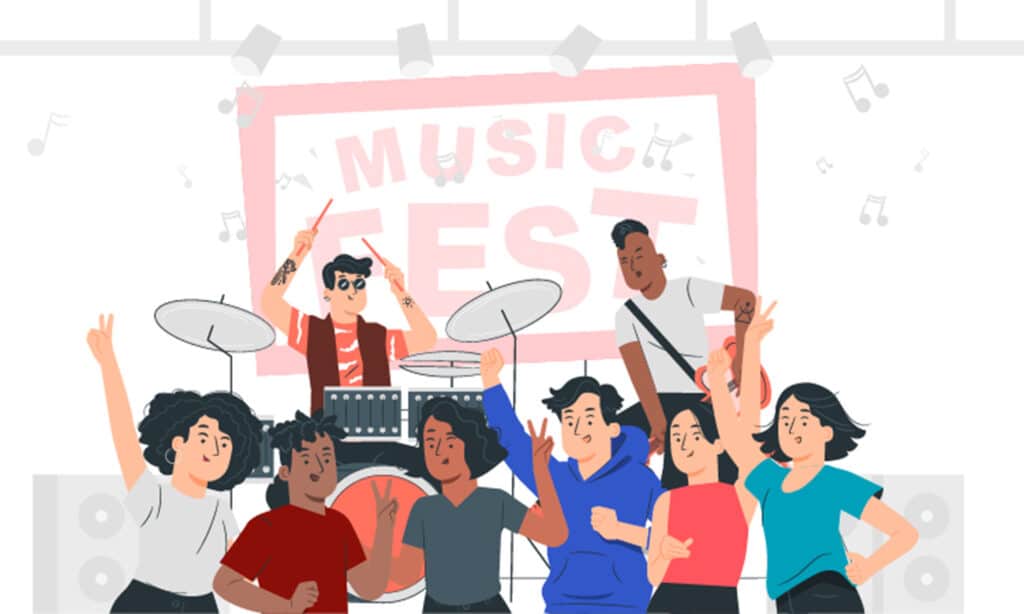
We are now seeing people not only return to events in astonishing numbers, but return with an increased interest in pre-planning, reserving spaces in advance, and interacting with digital tools in congruence with the event parking experience. While people crave the return to quality experiences with other humans, they don’t want to have to interact with them to complete basic transactions in everyday life. We can see this trend in how many restaurants have kept QR codes at tables for ordering and payment so diners can order at their leisure.
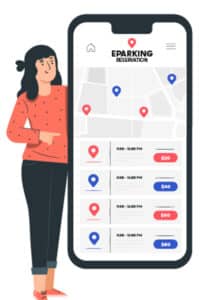
As consumer behavior evolves, parking asset owners and operators are being prompted—or forced in some cases—to evolve alongside them by digitalizing antiquated solutions and introducing more intuitive, high-tech ways to find and pay for parking.
As everything from ticketing to stadium menus goes digital, parking isn’t getting left behind. And in some cases, it’s leading the evolution of the event experience.
The way event parking has changed is a unique progression. We didn’t go from the horse buggy to the Tesla overnight—we started with cash.
Event parking began with (and in some operations still utilizes) the model of “you give me cash, I let you park.” Depending on the situation, you might hand cash to someone on your way in to park at the event and follow the flaggers to your spot (and they just might give you a “receipt” to put on your dashboard), or you might hand the valet your keys and pay cash at the end, or park in a lot away from the event location with a guy is sitting in a folding chair collecting $10. Next, we started getting attendants in a box with a cash machine, and they had credit card readers too. Then—and this was only within the last 10 years—we moved away from the attendant to a kiosk that takes cash or card and has a printer. You either pull a ticket and the gate goes up or you get this piece of paper to stick on your windshield, so you don’t get towed.
In 2020, when COVID-19 completely halted the event space, many of the inefficiencies in the industry were exposed. It became clear that even the seemingly advanced systems at the time didn’t react to falling occupancy, were far too reliant on touching shared screens, and were difficult to adapt to new uses like outdoor dining or pop-up COVID-19 testing.
At the same time, the restaurant and retail industries were experiencing the renaissance of the QR code and curbside pickup. Consumers quickly picked up the skills to interact with apps, reserve a grocery order in advance, pull into a space and type in the spot number on their app. Out of necessity, that digital experience became second nature.
When people started returning to parking garages and lots, event parking had to catch up. Those who had anticipated the change early, either during or even before the pandemic, had a huge competitive advantage. Consumers would choose touchless, mobile-first experiences over antiquated ones time and time again. In fact, from 2021 to 2022, there was a 433% increase in QR code scanning globally.
Quickly, the rest of the industry fell into step and the parking ended up where we are today, with high rates of digital reservations, utilizing QR-coded entry, and a greater reliance on enforcement.
With events, the return to normalcy was not gradual but all at once. After many months of almost zero in-person events, everyone was ready to come back. Event parking had to get back up on its feet—and quickly. That meant a heavy reliance on digital solutions and signage over physical kiosks and gates.
While this new style of future-forward event parking is the natural next step in the evolution, it had to happen a bit more hurriedly than in past phases. With that rapid growth, it’s no surprise there have been a few growing pains.
Parking is people’s first and last impression when they attend an event. As more and more attendees choose to drive themselves, venues are increasingly focused on that part of the event experience.
Feeling confident in those planning stages of going to an event is key to driving high ticket sales and repeat customers. Once an event goer has experienced a positive parking experience (leaving a 4 or 5-star review) with simple reservation, prepayment, navigation, ingress, and egress, they are 40% more likely to make a reservation for a second parking session when compared to parkers who had a bad experience (left a 1- or 2-star review).
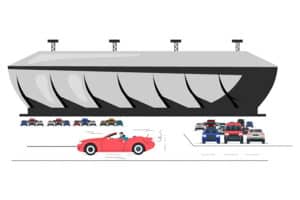
Of course, to make this work there is a learning curve—and the size of that curve depends on the audience and how familiar they are with digital payments and paying for parking on a mobile phone.
In short: free flow isn’t designed to work everywhere.
That’s why the event parking category has grown so immensely over the last few years—there’s no one-size-fits-all solution. As technology becomes even more deeply embedded in this once-antiquated industry, the gap of who’s in and who’s out is growing. When businesses do make that leap to close the digital divide, they find that their consumer audience is largely ripe for the adoption of a digitally enhanced system, but that some groups still lag.
Our event clients are realizing that and they’re starting to leap into action but sometimes there’s a sharper curve than other times. For instance, if you have visitors who are attending every game of the season, they’re going to figure out how this new parking system works on the first visit, and then it should be smooth sailing from there. But, if you have new eventgoers every weekend, it may be a bigger lift to make a smooth transition.
To make sure that new technology implementations in the event space make a positive impact on the bottom line, it’s key that venues and parking operators eliminate struggles with the learning curve. They can help customers understand how to interact with new technology by having a resource to ask questions and make sure they’ve done what they need to avoid a notice.
Online support solutions and other in-person or digital resources can be huge to make the switch seamless. According to Forbes, 84% of consumers are more likely to support businesses that offer self-service options like chatbots and FAQs.
Having these convenient support options are key to ensuring you’re not one of the businesses that spend a combined $4.7 trillion in expenses each year from not meeting consumer expectations.
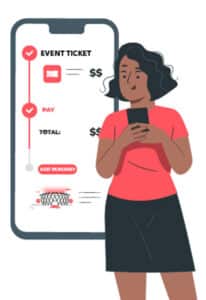
The way people find out about parking on-site—or physically find it once they arrive—dictates a lot about how they will be willing to and how they may prefer to interact with digital tools on-site. The consumer who reserves parking in advance is often more tech-savvy, while the one who finds a place to park via a street sign labeled “P” may be more resistant to adopting Bluetooth access.
Looking at demand patterns is a great way to anticipate how a user group may do with adopting a new digital parking solution.
The ecosystem has been fragmented in the past because everyone has such different needs. A small venue that seats 100 has many different needs than a 50,000-person stadium. As event parking technology becomes more digitally enhanced, solutions are more similar from site to site, while functionality varies.
While the small venue and the stadium may both be relying on pre-paid parking reservations, the small venue might receive those on a handheld device by two attendants at the entrance while the stadium may choose to accept those reservations on a dozen kiosks at every entrance to the lot.
Every site is going to have a unique configuration, depending on needs and audience. There are tradeoffs to any combination of technology.
For example, free flow parking requires no payment on entry, so it can drastically speed up the process of entering a garage, but it can mean a few upset customers who don’t realize they have to pay and subsequently receive a notice for unpaid parking. Pre-payment at—or before—entry achieves that clear communication of expectations for customers, but almost always means longer lines.
The first step in assembling an individualized solution that will meet your location’s unique needs is looking at your user base. You need to understand who is the person that will be using this technology 99% of the time, and then who are the 1% of users, the outliers that still matter. Because remember, a few bad reviews can be detrimental. Ultimately, you can’t just look at the 99%, you have to dig into who that 1% is—whether it’s the not-so-tech-savvy crowd or the fair-weather fans.
Let’s say you’re a stadium that’s home to a local football team. You host all of the home games, plus an occasional graduation ceremony or fundraisers. Based on your user group, which is 99% young, tech-savvy fans who go to almost every game, you’re a prime candidate for free flow. But then, you have that 1%—let’s say, the grandparents that are attending a graduation ceremony once a year or the out-of-town fans that come for the one big rivalry.
The key to making the solution designed for the 99% work for the 1% is adaptability.
For those outlier situations, you can have a system configured with additional technology options like handhelds or a few pay-on-foot kiosks. So while the fans that pay to park via their phones every week can continue to enjoy that experience, a one-time visitor who hasn’t adopted that system can choose to enter their license plate number on a kiosk or with an attendant at the entrance of the lot.
At smaller venues or those with rare event needs, handhelds can often be a do-it-all solution. From collecting pre-paid parking reservations to processing live payments in seconds, the power of handheld devices in today’s world has drastically changed what can be accomplished with a few attendants holding smartphones.
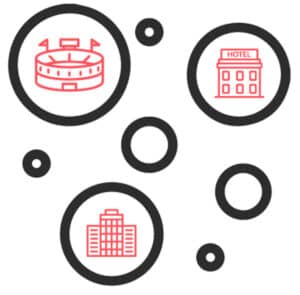
As event parking continues its evolution, we expect to see a lot of change in what people demand from digital solutions, and how quickly they demand it. That’s why investing in at least a baseline of digitalization with a solution that offers adaptable features is what we recommend to every single one of our partners.
When we think about how much things like the COVID-19 pandemic completely evolved the event landscape overnight, there is no such thing as being too adaptable. Having options that can be added on, dropped, turned on, and turned off at the press of a button is the key to staying afloat and getting ahead of what consumers want as event demands continue to change day to day, month to month, and year to year. ◆
Kevin Uhlenhaker is Senior Vice President and General Manager of Ungated Solutions for FLASH.

Venue Management’s Most Exciting Technology Had Its Roots in Parking

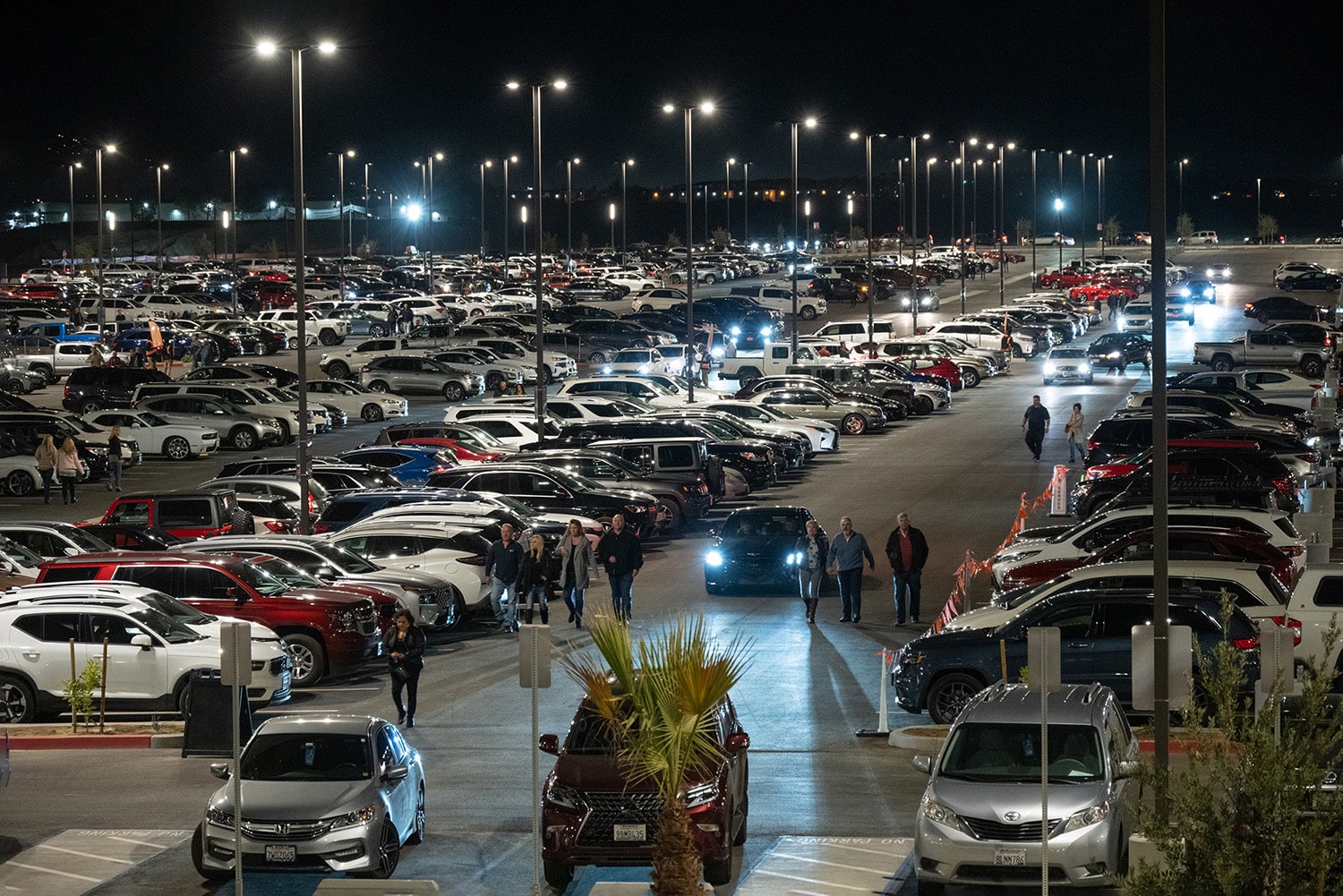
Parking & Mobility is IPMI’s flagship publication, covering the news, trends, analysis, technologies, and people of the parking and mobility industry, and how it affects and influences communities around the world.
| Cookie | Duration | Description |
|---|---|---|
| cookielawinfo-checkbox-advertisement | 1 year | Set by the GDPR Cookie Consent plugin, this cookie is used to record the user consent for the cookies in the "Advertisement" category . |
| cookielawinfo-checkbox-analytics | 11 months | This cookie is set by GDPR Cookie Consent plugin. The cookie is used to store the user consent for the cookies in the category "Analytics". |
| cookielawinfo-checkbox-functional | 11 months | The cookie is set by GDPR cookie consent to record the user consent for the cookies in the category "Functional". |
| cookielawinfo-checkbox-necessary | 11 months | This cookie is set by GDPR Cookie Consent plugin. The cookies is used to store the user consent for the cookies in the category "Necessary". |
| cookielawinfo-checkbox-others | 11 months | This cookie is set by GDPR Cookie Consent plugin. The cookie is used to store the user consent for the cookies in the category "Other. |
| cookielawinfo-checkbox-performance | 11 months | This cookie is set by GDPR Cookie Consent plugin. The cookie is used to store the user consent for the cookies in the category "Performance". |
| CookieLawInfoConsent | 1 year | Records the default button state of the corresponding category & the status of CCPA. It works only in coordination with the primary cookie. |
| elementor | never | This cookie is used by the website's WordPress theme. It allows the website owner to implement or change the website's content in real-time. |
| viewed_cookie_policy | 11 months | The cookie is set by the GDPR Cookie Consent plugin and is used to store whether or not user has consented to the use of cookies. It does not store any personal data. |
| Cookie | Duration | Description |
|---|---|---|
| _ga | 2 years | The _ga cookie, installed by Google Analytics, calculates visitor, session and campaign data and also keeps track of site usage for the site's analytics report. The cookie stores information anonymously and assigns a randomly generated number to recognize unique visitors. |
| _ga_02PMHW8YWC | 2 years | This cookie is installed by Google Analytics. |
| _ga_LC0QJJHM3J | 2 years | This cookie is installed by Google Analytics. |
| _ga_V9KYTSBYT2 | 2 years | This cookie is installed by Google Analytics. |
| iutk | 5 months 27 days | This cookie is used by Issuu analytic system to gather information regarding visitor activity on Issuu products. |
| Cookie | Duration | Description |
|---|---|---|
| mc | 1 year 1 month | Quantserve sets the mc cookie to anonymously track user behaviour on the website. |
| Cookie | Duration | Description |
|---|---|---|
| ultp_view_1052 | 1 day | No description |
| ultp_view_1058 | 1 day | No description |
| ultp_view_1060 | 1 day | No description |
| ultp_view_1064 | 1 day | No description |
| ultp_view_1068 | 1 day | No description |
| ultp_view_1070 | 1 day | No description |
| ultp_view_1072 | 1 day | No description |
| ultp_view_1078 | 1 day | No description |
| ultp_view_1082 | 1 day | No description |
| ultp_view_1088 | 1 day | No description |
| ultp_view_1100 | 1 day | No description |
| ultp_view_1103 | 1 day | No description |
| ultp_view_1114 | 1 day | No description |
| ultp_view_1118 | 1 day | No description |
| ultp_view_1122 | 1 day | No description |
| ultp_view_1125 | 1 day | No description |
| ultp_view_1130 | 1 day | No description |
| ultp_view_1132 | 1 day | No description |
| ultp_view_1135 | 1 day | No description |
| ultp_view_1541 | 1 day | No description |
| ultp_view_1554 | 1 day | No description |
| ultp_view_1557 | 1 day | No description |
| ultp_view_1560 | 1 day | No description |
| ultp_view_1563 | 1 day | No description |
| ultp_view_1568 | 1 day | No description |
| ultp_view_1572 | 1 day | No description |
| ultp_view_1576 | 1 day | No description |
| ultp_view_1580 | 1 day | No description |
| ultp_view_2305 | 1 day | No description |
| ultp_view_2321 | 1 day | No description |
| ultp_view_2338 | 1 day | No description |
| ultp_view_2342 | 1 day | No description |
| ultp_view_259 | 1 day | No description |
| ultp_view_270 | 1 day | No description |
| ultp_view_275 | 1 day | No description |
| ultp_view_286 | 1 day | No description |
| ultp_view_3074 | 1 day | No description |
| ultp_view_3115 | 1 day | No description |
| ultp_view_3334 | 1 day | No description |
| ultp_view_3336 | 1 day | No description |
| ultp_view_3338 | 1 day | No description |
| ultp_view_3340 | 1 day | No description |
| ultp_view_3346 | 1 day | No description |
| ultp_view_3354 | 1 day | No description |
| ultp_view_3361 | 1 day | No description |
| ultp_view_3367 | 1 day | No description |
| ultp_view_365 | 1 day | No description |
| ultp_view_367 | 1 day | No description |
| ultp_view_38 | 1 day | No description |
| ultp_view_3846 | 1 day | No description |